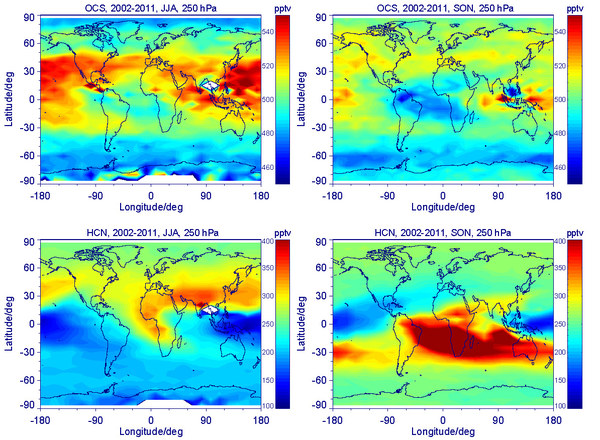Global OCS distribution derived from MIPAS measurements

Upper panel: OCS distribution measured by MIPAS during the years 2002-2011 on the 250 hPa level (10-11 km), averaged over the months June to August (left) and September to November (right). Lower panel: Global distribution of the biomass burning tracer HCN for the same time periods. The location of the OCS maximum over the Pacific and Indian Ocean points to a large influence of oceanic sources. The missing correlation with HCN indicates low release of OCS by biomass burning.
Carbonyl sulfide (OCS) is the most prevalent sulfur-containing species in the atmosphere. It has an atmospheric lifetime of 1.5 - 3 years and is an important precursor of stratospheric aerosols, which significantly contribute to climate forcing. Therefore good knowledge of the OCS distribution and its temporal development is of scientific interest. However, only a small number of global OCS data sets is available, mostly with poor spatial coverage. The comprehensive data set of MIPAS OCS can help to give further insight into the global OCS distribution.
For more details see: http://www.atmos-chem-phys.net/17/2631/2017/
